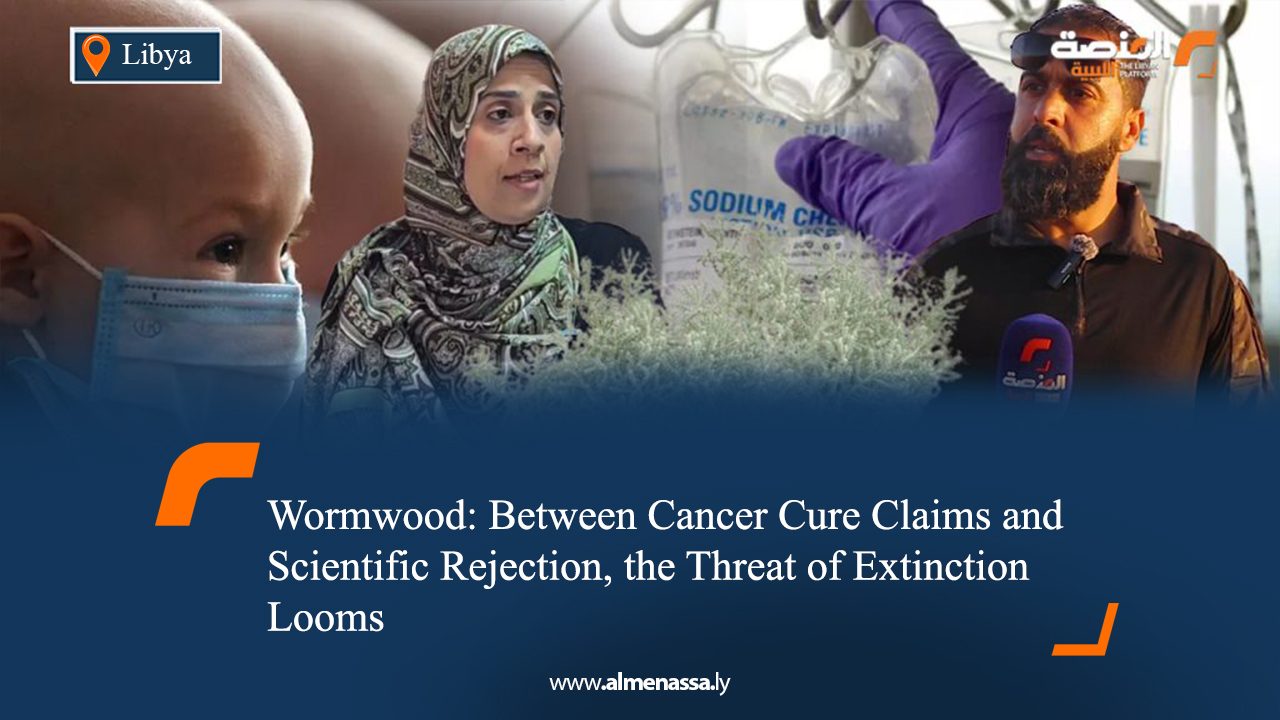As claims tout the therapeutic benefits of wormwood in treating cancer, experts continue to warn that there’s no scientific merit to such assertions. Meanwhile, rampant overharvesting threatens to push the plant toward extinction.
Citizen Testimonies Stir Public Debate
Recent days have seen a surge in stories celebrating wormwood’s alleged role in curing cancer. Among them is Libyan resident Ali Mohamed Younes from Sabratha, whose son recorded a video showing X-rays and medical analyses that purportedly document his cancer diagnosis—and subsequent recovery—after using a traditional remedy recommended by Ibrahim Al-Marimi.
Al-Marimi, a resident of Sulug, claimed that he created a blend of wormwood and coffee that successfully treated 38 cases of cancer. He urged authorities to scientifically examine his formula, asserting that it has proven effective in eradicating the disease.
No Scientific Proof Backing Claims
These bold claims sparked heated discussions across social media and television. Internal medicine and geriatrics consultant Issam Al-Ghunaie firmly rejected the idea that wormwood-coffee mixtures can treat cancer, stating in comments to Al-Manassa that no scientific evidence supports such use, and warned against excessive consumption.
While specialists continue to refute any scientific link between wormwood and cancer treatment, concerns mount over the aggressive uprooting of the plant, which now threatens its survival in Libya. Harvesting from the root makes natural regeneration nearly impossible.
Despite calls for more sustainable gathering by cutting only what’s needed and leaving roots intact, this destructive practice continues unchecked.
Reckless Harvesting and Its Ecological Toll
Speaking to Al-Manassa, researcher Heba Al-Hanish from the Agricultural and Animal Research Center in Al-Bayda voiced alarm over the plant’s increasing risk of extinction. The unsupervised uprooting comes in response to widespread but inaccurate claims about wormwood’s medical value and viral videos encouraging its removal.
Al-Hanish, an expert in aromatic and medicinal plants, highlighted the historic role of wormwood in Libyan folk medicine. However, she stressed that her center’s focus is botanical, not medical, and emphasized its ecological importance and the urgent need to preserve it.
Roots Have No Medicinal Use
Wormwood is a shrubby herb with diverse traditional uses, but only its leaves and flowers hold therapeutic properties; its roots have no medical application, Al-Hanish explained. The root’s biological role is strictly ecological: anchoring the plant and absorbing nutrients.
For safe and sustainable use, she recommended harvesting only up to 20% of the above-ground parts and leaving roots and stems intact to allow for natural regrowth.
Al-Hanish criticized the rising trend of uprooting as an unscientific and harmful practice that endangers this natural resource. She drew comparisons to Libya’s historic loss of silphium, a rare plant once found in the Green Mountain region but lost due to poor gathering practices and lack of environmental awareness, now remembered only through old stamps and coins.
She urged strict adherence to scientific guidelines, including harvesting after flower bloom in late summer, using clean, sharp tools, and cutting with precision to preserve the plant’s renewal potential.
Calls for Protection and Awareness
Al-Hanish called on official bodies, government agencies, agricultural police, and municipal guards to immediately stop indiscriminate harvesting, ban bulk trade and export, and hold unlicensed sellers accountable. She also advocated for public education campaigns to raise awareness of wormwood’s value and introduce sustainable harvesting practices, as well as tree-planting drives to combat desertification and climate change.
Over 400 Global Varieties, 8 in Libya
In comments to Al-Manassa, Abdelsalam Gweider of Omar Al-Mukhtar University noted that wormwood has been used since ancient times for everything from treating parasites to repelling microbes. He emphasized the need for regulated use and described it as a widely distributed plant across the Mediterranean.
Gweider cited studies indicating more than 400 varieties of wormwood worldwide, classifying it as a high-quality pasture plant with varying grades.
He strongly condemned the uprooting trend, warning that such practices risk wiping out the plant.
Research Efforts and Preservation Plans
Abdelhamid Bousalloum, Director General of the Agricultural and Animal Research Center, also cautioned that rampant harvesting could drive wormwood to extinction. He claimed many harvesters seek commercial profit rather than medicinal use and confirmed the center had alerted regulatory bodies.
Bousalloum clarified that determining the plant’s role in cancer treatment is beyond his center’s scope, which focuses on sustainability. He noted there are eight native wormwood types in Libya and revealed an upcoming collaboration with the Biotechnology Center to analyze their properties and compare effectiveness.
Ecological Significance and Health Benefits
The center’s official social media posts described wormwood as a key medical and aromatic plant that contributes to soil protection and biodiversity. It serves as a natural habitat for beneficial insects and microorganisms.
Unchecked exploitation threatens its extinction, causes soil erosion, and accelerates desertification, placing the ecological balance in jeopardy. The center emphasized that handling wild plants must comply with scientific and environmental standards.
As for medicinal benefits, wormwood’s active ingredients lie in its oil and a compound called santonin, known for expelling stomach worms. It’s also used to clear phlegm, treat hiccups and cramps, and address fevers and high blood sugar when prepared appropriately.
Its ash mixed with fat can treat skin conditions like alopecia and eczema. Leaves are burned in homes to purify the air and repel snakes and insects. However, overuse is dangerous due to santonin’s potential toxicity in high or prolonged doses.


